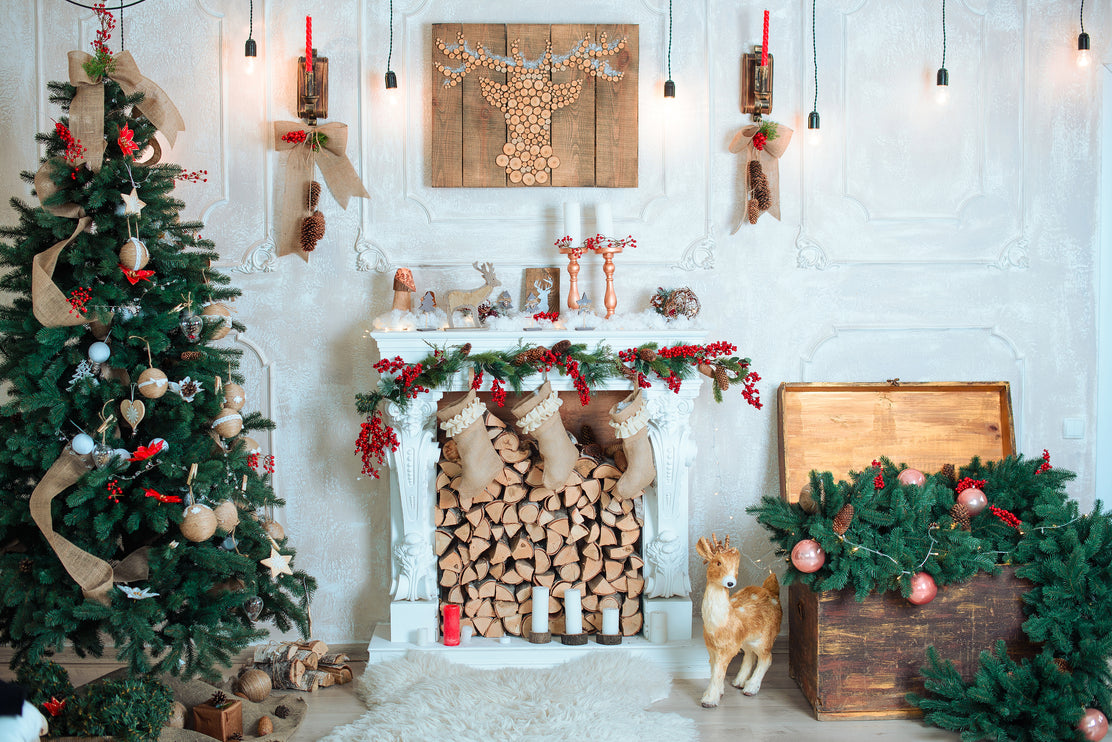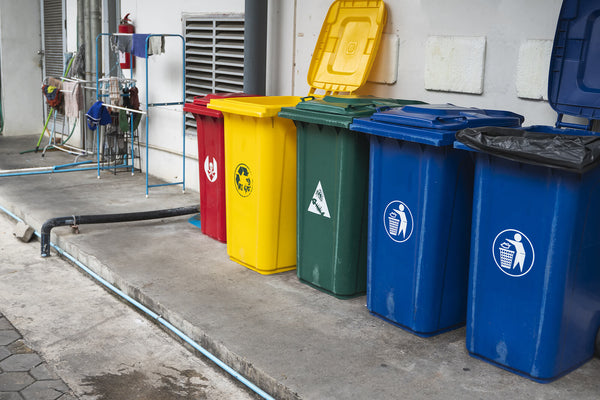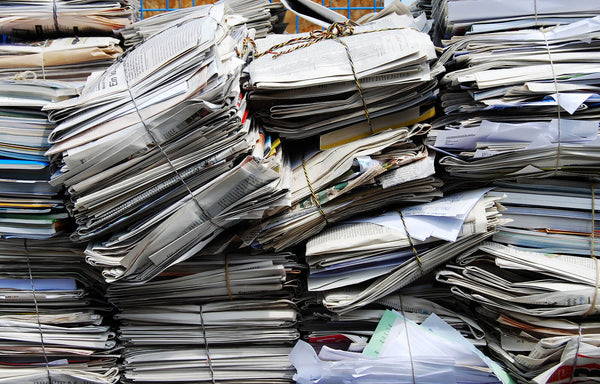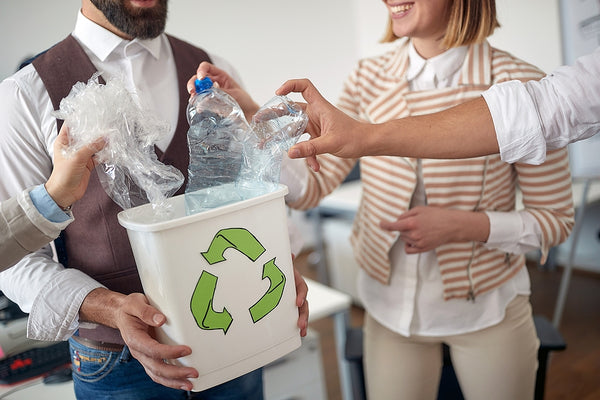Christmas might be the most wonderful time of the year, but it’s not a jolly one as far as waste is concerned. Whether it’s the aluminium casings from our favourite festive treats (mince pies) or throwing away the cards that temporarily adorn our window sills and mantelpieces, the UK’s Christmas recycling habits (or lack of) are a permanent fixture on Santa’s naughty list.
It’s easy to get caught up in the Christmas spirit as we fulfil the dreams of loved ones, carry out long-standing family traditions, and eat, drink and be merry. With so much attention to decorating and purchasing, we often forget about the aftermath. However, the festivities and feasting come at a hidden environmental cost.
How much waste is produced at Christmas?
The waste generated and discarded at Christmas in the UK is around 30% higher than the rest of the year. Households typically throw away three-and-a-half black bags of festive packaging — that’s enough to fill nearly one of our 240-litre wheelie bins.
We’ve picked out five mind-boggling and shocking Christmas waste statistics that could quickly make Santa and his reindeer retreat.
- Many of us buy too much food for Christmas that ultimately ends up in the bin. We bin 263,000 turkeys, 17.2 million Brussels sprouts, 7.5 million mince pies, and two million kilos of cheese. If that alone is difficult to digest, converting all our Christmas food waste into energy could power an average UK home for around 57 years.
- The Royal Mail estimates it delivers 150 million Christmas cards during the festive period. While the heart-warming messages are lovely, the amount of card material (cards and packaging) we clock up could cover Big Ben 260,000 times.
- Although Christmas can be a time of joy for many people, it is usually a much darker time for Christmas lights. You can recycle them, but the UK still discards approximately 500 tonnes of Christmas lights yearly.
- DEFRA (the Department for Environment, Food and Rural Affairs) estimates you could gift wrap the island of Guernsey with the amount of wrapping paper the UK gets through each Christmas. You also need sticky tape to make presents prettier and create the surprise — we use a million rolls of tape on Christmas Eve alone.
- Christmas isn’t complete without a Christmas tree. Sadly, we welcome the new year by dumping 160,000 trees each January.
How to have a sustainable Christmas
But the season of goodwill doesn’t have to be so wasteful. From eating with the seasons to buying local and steering clear of glitter, we can cut the excess waste and pollution over the festive period with just a few simple changes.
If you’re dreaming of a green Christmas like us, check out our festive recycling tips below to enjoy Christmas more consciously.
Recycling Christmas cards
Each person in the UK sends and receives 17 Christmas cards on average. When posting your cards, opt for recyclable or plantable ones. Look for cards made from recycled or FSC-certified paper, and avoid any with glitter or foil, as they can’t be recycled.
When the festivities are over, tear off sections of Christmas cards decorated with glitter, foil, ribbons, or bows, and add the rest to your recycling household wheelie bin. You can toss the non-recyclable parts in your general waste bin. Reuse some Christmas cards as gift tags for next year by cutting images out, punching a hole, and adding a piece of string.
Recycling Christmas paper

Most of the wrapping paper we rip off in excitement on Christmas morning is non-recyclable. Instead, look for recyclable wrapping paper that’s foil-free and glitter-free. Plastic ribbons and tape are also big no-nos. Save bags and gift wraps from presents you’ve received, or wrap your presents in brown paper. You can then draw a winter wonderland design directly onto the paper using markers or metallic pens. For a fabulous festive finish touch, add a reusable ribbon.
Other sustainable Christmas present wrapping ideas include using old magazines and newspapers, reusing shoe boxes, or repurposing mason jars. Using tape to wrap presents has always been a sticking point, so consider the eco-friendly Japanese furoshiki method. This is a traditional cloth used to wrap and transport gifts. It makes for beautiful, reusable, and timeless packaging.
Keep in mind that some local councils refuse to recycle any wrapping paper. If your local council does recycle it, do the scrunch test before you place it in the recycling bin — no bounce back when you scrunch it means it can be recycled. Remember to remove all sticky tape, bows, and tags too.
Recycling Christmas trees
Christmas trees present the age-old debate of real vs. fake. Unless you plan to reuse a plastic Christmas tree for at least 10 years, you’re better off buying a real tree from a sustainable forest. Trees that are FSC certified or have the British Christmas Tree Growers Association mark have been responsibly managed and grown using minimal pesticides.
Even better, real trees can be recycled. Check your local council’s sustainable collection services, as some will collect trees after Christmas and turn them into wood chippings used in parks and woodland areas. There’s also the low-maintenance option of renting a Christmas tree. This way, you only need to care for it over the festive period and return it to be replanted for the following year.
Always be clear on how you plan to dispose of your tree once Father Christmas has been. If you buy a potted tree, look for one grown in peat-free compost and think about replanting it.
While artificial Christmas trees can’t be recycled due to the materials they are made with, they can last for many years if well cared for.
Recycling Christmas decorations

Baubles and tinsel soon lose their shine when you realise neither can be recycled. You’ll need to be placed in your general waste bin instead. To decorate your home or workplace, try to upcycle (or reuse) old decorations, or get creative and make your own. Decorations made from fabric, glass, and recycled wood are great recyclable materials to add pizazz to your festive look.
Head to your local woodland for pine cones for your Christmas wreath, and make your own paper chains with used wrapping paper. Pine cones and other natural waste (mistletoe, holly, ivy, etc.) go into your garden waste wheelie bin.
Sadly, most Christmas crackers are not recyclable, and the toys hidden inside are usually made of plastic. Instead, adorn your table with FSC-certified crackers and avoid single-use napkins and tablecloths.
If you want to bring the “wow” factor, choose beautiful handmade crackers and fill them with something sustainable (and delicious) like chocolates. This ensures you give your guests something they will value this Christmas.
Don’t forget to store your decorations carefully at the end of the season so you can reuse them for many years to come.
Recycling Christmas lights
Use LED lights on your Christmas tree and watch the environment’s face light up. They use an average of 75% less energy, can last up to 25 times longer, and have just as much of a twinkle in their eye. Don’t forget to turn your lights off when you sleep — it’s safer and wastes less energy. We recommend putting your lights on a timer so they turn off automatically in case you forget.
Your fairy lights are classified as WEEE and must not be sent to landfills. Some local councils collect small electrical items at the roadside, but if you still need to, you can take items to your local household waste recycling site.
How to recycle cardboard
Most online orders are sent out in cardboard boxes, which most local councils recycle at the roadside. Remove any non-cardboard bits, such as plastic, polystyrene inserts, and sticky tape, then collapse the boxes and pop them in your wheelie bin ready for collection.
Where possible, reuse cardboard delivery boxes to wrap larger presents and then recycle them afterwards.
Where to recycle batteries
As a nation, we are responsible for hundreds of tonnes of batteries going to waste each year. This is a big negative over the festive season when we’re playing with our new gifted gadgets. Switch to rechargeable batteries when giving electrical items, as this benefits the environment and helps the lucky recipient enjoy substantial savings in the long run.
Batteries can’t be recycled roadside. They can be a serious fire hazard if you chuck them in with your general rubbish or recycling. However, there are plenty of battery recycling collection points where you can drop them off for recycling.
Recycling at Christmas
Nothing is more important at Christmas than the people we spend it with, but that shouldn’t come at the cost of causing damage to our world. It only takes a little extra effort, thought, and care to enjoy an eco-friendly Christmas, so please think outside the box and do what you can to recycle this Christmas.








Craig Pryce